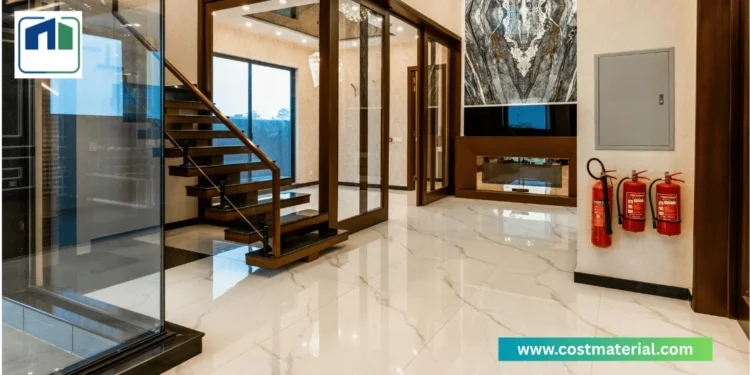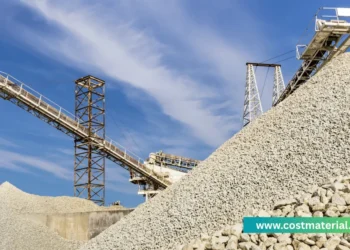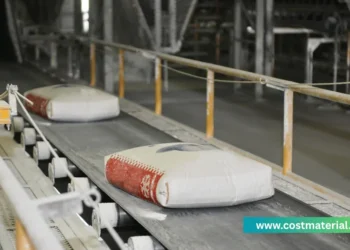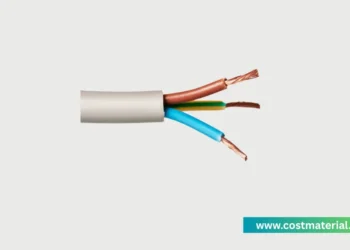Table of Contents
Fire extinguishers are a critical safety requirement for construction sites, offices, and homes in the Philippines. With fire incidents still a major concern, having the right type and size of extinguisher can save lives and property. But how much does a fire extinguisher cost in 2024? Prices vary depending on type, capacity, brand, and supplier. To help you budget properly, we’ve compiled an fire extinguisher price list for the year 2024 based on data from top Philippine hardware stores and fire safety suppliers.
1 What is a Fire Extinguisher?
A fire extinguisher is a portable, hand-held safety device designed to control or extinguish small fires before they escalate. It is a critical first line of defense in homes, workplaces, construction sites, and industrial facilities. Fire extinguishers work by releasing an extinguishing agent (such as water, foam, dry chemical, or CO2) that suppresses flames by cooling the fire, cutting off oxygen, or disrupting chemical reactions. In the Philippines, where fire incidents remain a major concern—especially in densely populated areas and construction zones—having the right type of fire extinguisher can mean the difference between a minor incident and a catastrophic disaster.
2 Types of Fire Extinguishers and Their Uses
Fire extinguishers are classified based on the type of fire they combat. The five main classes (A, B, C, D, and K) correspond to different fire sources:
Class A (Ordinary Combustibles) – Fires involving wood, paper, cloth, and plastics. Use water or ABC dry chemical extinguishers.
Class B (Flammable Liquids) – Fires from gasoline, oil, grease, or solvents. Foam (AFFF) or CO2 extinguishers are ideal.
Class C (Electrical Fires) – Fires caused by live electrical equipment. CO2 or dry chemical (non-conductive) extinguishers are safest.
Class D (Combustible Metals) – Fires involving magnesium, sodium, or lithium. Requires specialized Class D extinguishers (rare in general use).
Class K (Kitchen Fires) – Fires from cooking oils and fats. Wet chemical extinguishers are designed for this purpose.
In the Philippines, the most common types are:
ABC Dry Chemical – Versatile for homes, offices, and construction sites.
CO2 Extinguishers – Used in server rooms, labs, and electrical panels.
Foam (AFFF) Extinguishers – Effective for fuel and chemical fires.
Wet Chemical Extinguishers – Essential for commercial kitchens.
3 Why Are Fire Extinguishers Important?
Saves Lives and Property – A small fire can turn deadly within minutes. Immediate access to a fire extinguisher can prevent injuries and costly damage.
Legal Compliance – In the Philippines, the Bureau of Fire Protection (BFP) mandates fire extinguishers in businesses, schools, and construction sites. Non-compliance can result in fines or closure.
Prevents Fire Spread – Early intervention stops fires from reaching gas lines, electrical systems, or flammable materials.
Reduces Insurance Costs – Proper fire safety measures, including functional extinguishers, may lower insurance premiums.
Emergency Preparedness – Fires can happen anytime—whether from faulty wiring, cooking accidents, or welding sparks on construction sites. Being prepared is non-negotiable.
4 Choosing the Right Fire Extinguisher
When selecting a fire extinguisher, consider:
✔ Fire Risk – Match the extinguisher type to potential hazards (e.g., CO2 for electrical fires, wet chemical for kitchens).
✔ Size & Capacity – A 2kg ABC extinguisher may suffice for a small office, while a 9kg unit is better for construction sites.
✔ Maintenance Requirements – Ensure annual inspections and refills to keep the extinguisher functional.
✔ BFP Approval – Always check for PS Mark or ICC certification to guarantee compliance with Philippine standards.
Fire extinguishers are not just a legal requirement—they are lifesavers. Whether you’re a homeowner, business operator, or construction manager, investing in the right type—and maintaining it properly—can prevent tragedies. For Filipinos living in fire-prone areas or working in high-risk industries, understanding fire extinguisher basics is a crucial step in fire safety preparedness.
5 Fire Extinguisher Price List 2024 (Philippines)
Here’s a comprehensive table of fire extinguisher prices in the Philippines, including different types (ABC, CO2, foam, wet chemical) and sizes:
| Specification | Unit | Price (PHP) |
|---|---|---|
| Dry Chemical (ABC) | ||
| 1kg ABC Dry Chemical | pc | ₱350 - ₱500 |
| 2kg ABC Dry Chemical | pc | ₱600 - ₱800 |
| 4kg ABC Dry Chemical | pc | ₱1,200 - ₱1,500 |
| 6kg ABC Dry Chemical | pc | ₱1,800 - ₱2,200 |
| 9kg ABC Dry Chemical | pc | ₱2,500 - ₱3,000 |
| CO2 (Carbon Dioxide) | ||
| 2kg CO2 Fire Extinguisher | pc | ₱3,000 - ₱4,000 |
| 5kg CO2 Fire Extinguisher | pc | ₱5,500 - ₱7,000 |
| Foam (AFFF) | ||
| 6L Foam Fire Extinguisher | pc | ₱2,500 - ₱3,500 |
| 9L Foam Fire Extinguisher | pc | ₱3,800 - ₱4,500 |
| Mechanical Foam (Class B) | ||
| 6L Mechanical Foam | pc | ₱2,800 - ₱3,500 |
| Water-Type (Class A) | ||
| 6L Water Fire Extinguisher | pc | ₱1,500 - ₱2,000 |
| Wet Chemical (Class K) | ||
| 6L Wet Chemical (Kitchen) | pc | ₱4,000 - ₱5,500 |
| Wall-Mounted Bracket | pc | ₱150 - ₱300 |
| Fire Extinguisher Cabinet | pc | ₱1,000 - ₱2,500 |
Need an Excel copy of this table? Download here
Key Notes:
✔ ABC extinguishers are the most common for construction and general use.
✔ CO2 extinguishers are ideal for electrical fires.
✔ Wet chemical (Class K) is best for kitchen fires.
✔ Prices may vary based on brand (Amerex, Badger, Firefly, etc.) and location.
This table of Fire Extinguisher Price List 2024 provided in this guide is based on market research, supplier data, and industry benchmarks. However, it’s important to understand the inclusions, exclusions, and key considerations when using these prices for budgeting or procurement.
✅ What’s Typically INCLUDED in the Price?
Basic Fire Extinguisher Unit
The quoted price usually covers the extinguisher itself (e.g., 6kg ABC, 5kg CO2).
Includes the cylinder, valve, pressure gauge, and nozzle.
Standard Certification (BFP-Compliant)
Most extinguishers sold by Wilcon, Ace Hardware, and Global Fire meet Bureau of Fire Protection (BFP) standards.
Look for PS Mark or ICC certification for guaranteed compliance.
Manufacturer Warranty (1-2 Years)
Reputable brands (Amerex, Badger, Firefly) often include a 1-2 year warranty against defects.
Free Basic Mounting Bracket (Sometimes)
Some suppliers bundle a wall bracket for free, especially in physical stores.
❌ What’s Usually NOT INCLUDED?
Annual Maintenance & Refilling
The initial price does not cover refilling or hydrotesting (required every 5-10 years).
Refill costs: ₱500 – ₱2,000 depending on size.
Fire Extinguisher Cabinets
Cabinets (₱1,000 – ₱2,500) are sold separately unless stated otherwise.
Delivery Fees
Online purchases (Lazada, Shopee) may charge extra for shipping, especially for bulk orders.
Taxes & Service Charges
Some stores list prices before VAT (12%), so confirm if the price is tax-inclusive.
⚖️ Key Factors Affecting Price Variations
Brand Reputation
Premium brands (Amerex, Ansul) cost 20–30% more than local brands (Firefly, Global Fire).
Capacity & Fire Class
Larger extinguishers (9kg ABC) cost more than smaller ones (1kg).
Specialized types (CO2, Wet Chemical) are pricier than standard ABC.
Supplier Markups
Physical stores (Wilcon, Ace) may have higher prices than online sellers due to overhead costs.
Promos & Bulk Discounts
Some suppliers offer 5–15% discounts for orders of 5+ units.
📌 Practical Tips for Buyers
✔ Ask if the price includes:
Bracket, warranty, and BFP compliance.
✔ Compare online vs. physical store prices – Online may be cheaper but check shipping fees.
✔ Negotiate for bulk orders – Contractors can often get discounts.
✔ Check expiration dates – Some sellers offload old stock at lower prices.
Fire Extinguisher Maintenance Costs
Owning a fire extinguisher isn’t enough—it must be properly maintained. Here’s what to expect:
Annual inspection: ₱300 – ₱1,000 (depends on size)
Refill cost: ₱500 – ₱2,000 (if expired or used)
Always check the expiration date (usually 5-10 years) and have it serviced yearly.
Did you find this blog post helpful? Share it to others! For more construction material price lists, check our other blogs.





